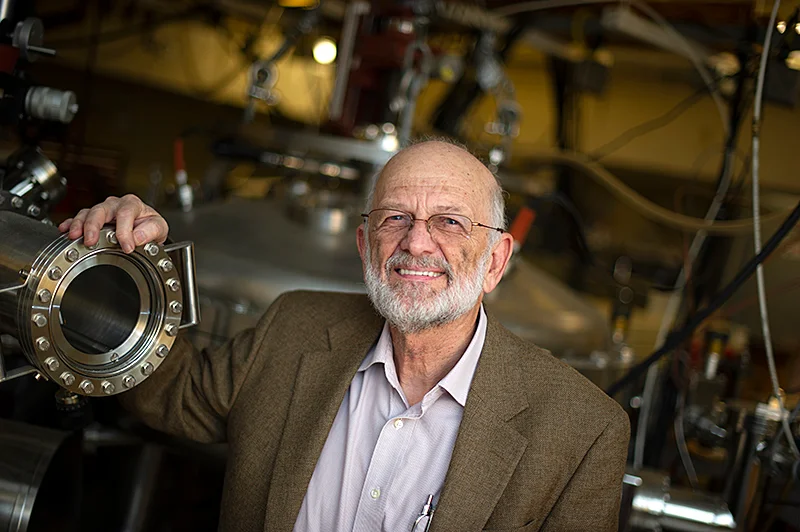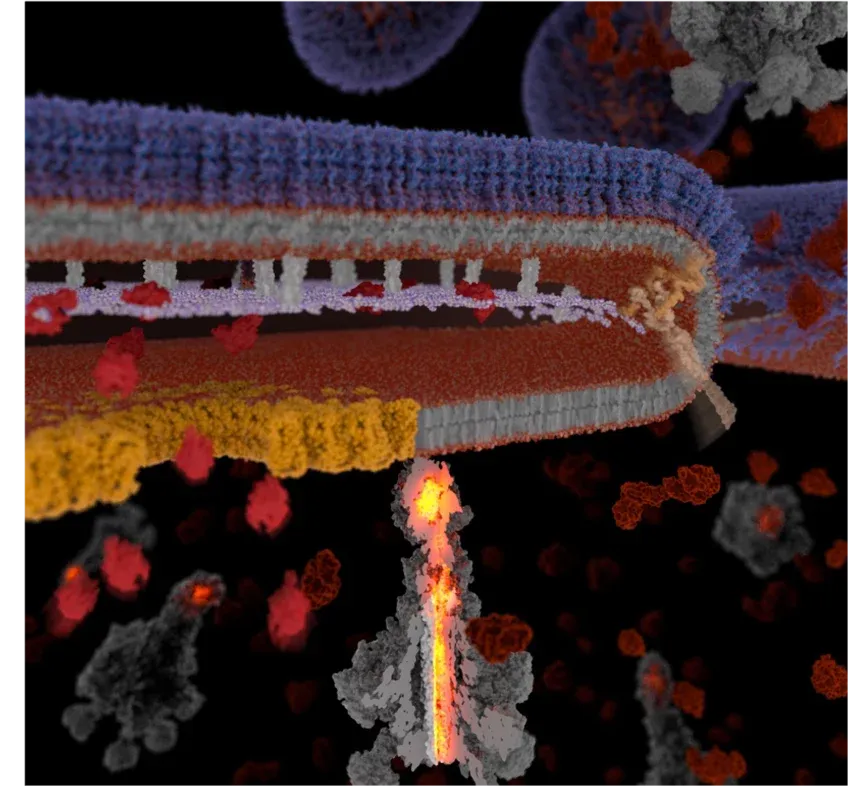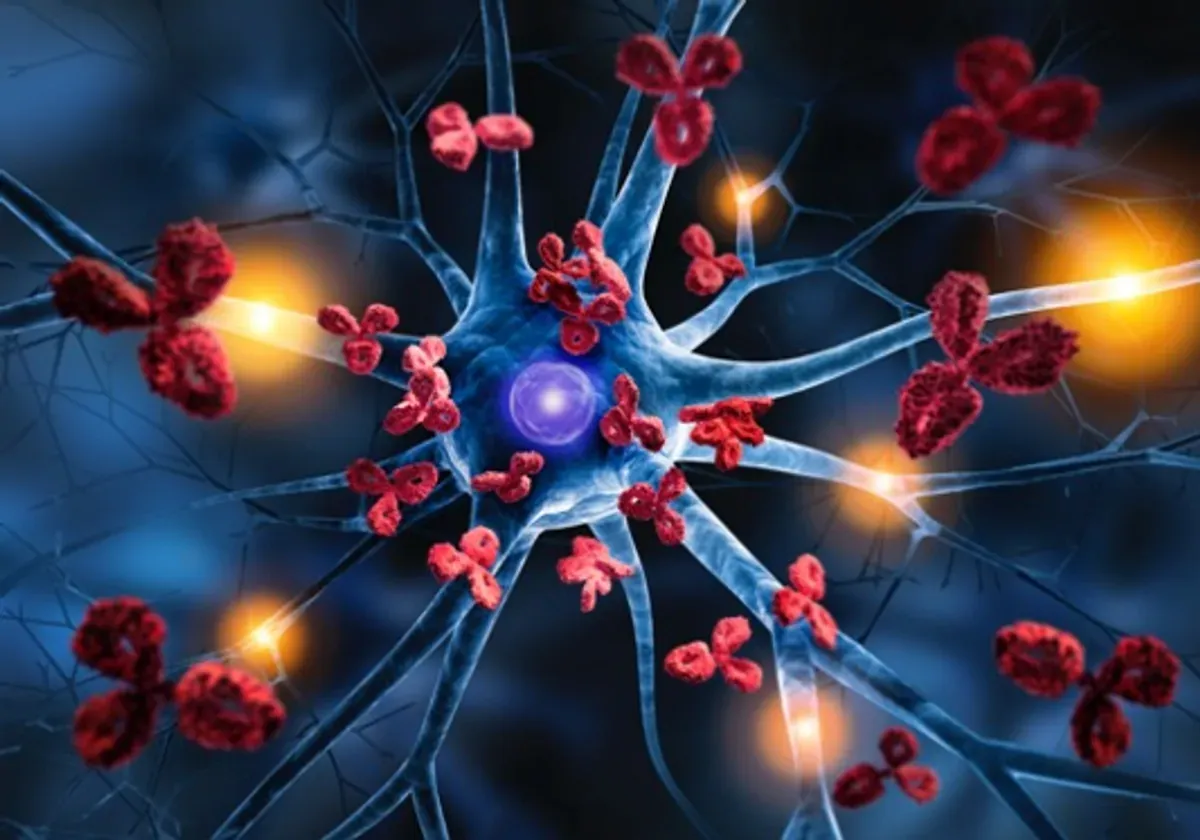
A tripeptide (example Val-Gly-Ala) with green marked amino end (L-valine) and blue marked carboxyl end (L-alanine)
One of the puzzles of how the earliest proteins were built from amino acids was that the reaction of joining two amino acids together is a condensation reaction in which a molecule of water is eliminated when the -C-OH of one amino acid binds to the H2N-C- of the other amino acid in what is known as a peptide bond:
but how could this happen in an aqueous solution?
In 2022, Professor R. Graham Cooks' team at Purdue University found the answer: It is due to the peculiar properties at the surface of droplets of water. Because of the way electrostatic forces align the water molecules at the surface, it behaves as though it is extremely dry, and highly acidic. These conditions provide the perfect conditions for a condensation reaction to occur, resulting in a peptides.
Droplets of water are everywhere in nature, from the spray of breaking waves, the splash of raindrops, waterfalls, trickling streams to aerosols of water in clouds and fog.
And Professor Cooks's team at Purdue have now shown that these conditions also occur at the macro, centimeter scale as water evaporates on, for example rocks or the margins of hydrothermal pools. They have also shown that these reactions, in the presence of oxazolones (produced by the dehydration of amino acids) preserve the chirality of the peptides so the resulting peptides are 'L' enantiomers, as found in all living organisms.
As the Purdue University press release says:
The study adds to the body of evidence that the surface of water drops represents a uniquely active physical and chemical system. Present are very high electric fields and extreme acidity that drives dehydration of amino acids to form peptides. Studies of the chemistry at water droplet interfaces offer new insights into the early stages of life's chemical evolution.
SignificanceAnd so that day that creationist frauds must be dreading, when science finally closes their favourite gap in which to force-fit their ever-shrinking little god finally slams as shut as all the other gaps it used to occupy in the minds of scientifically illiterate believers, gets a little closer. Only yesterday we learned how simple metabolic biochemical cycles can be produced from simple precursors, all of which were present on the pre-biotic Earth and without protein enzymes, and here we see how the proteins that could catalyse and improve those processes could also arise from simple precursors that were also present.
This study provides experimental evidence identifying oxazolones as the key intermediates in prebiotic peptide synthesis. These compounds yield the dipeptides upon reaction with water and generate tripeptides in the presence of other amino acids. These key steps in protein formation occur in pure water droplets. Amino acid chirality is preserved in forming the oxazolone and the addition of amino acids during peptide chain extension shows a strong chiral preference, viz. the aqueous droplet chemistry represents a simple route to chirally pure polypeptides. A direct connection between this intermediate and the dipeptide isomer, oxazolidinone, is demonstrated by simple hydration/dehydration. The oxazolone/oxazolidinone-mediated mechanism also occurs in macroscopic wet–dry cycling, establishing a strong connection between macroscopic and microscopic peptide synthesis.
Abstract
Peptide formation from amino acids is thermodynamically unfavorable but a recent study provided evidence that the reaction occurs at the air/solution interfaces of aqueous microdroplets. Here, we show that i) the suggested amino acid complex in microdroplets undergoes dehydration to form oxazolone; ii) addition of water to oxazolone forms the dipeptide; and iii) reaction of oxazolone with other amino acids forms tripeptides. Furthermore, the chirality of the reacting amino acids is preserved in the oxazolone product, and strong chiral selectivity is observed when converting the oxazolone to tripeptide. This last fact ensures that optically impure amino acids will undergo chain extension to generate pure homochiral peptides. Peptide formation in bulk by wet-dry cycling shares a common pathway with the microdroplet reaction, both involving the oxazolone intermediate.
Qiu, Lingqi; Cooks, R. Graham
Oxazolone mediated peptide chain extension and homochirality in aqueous microdroplets
Proceedings of the National Academy of Sciences (PNAS) 121(2). DOI: 10.1073/pnas.2309360120
© 2024 PNAS.
Reprinted under the terms of s60 of the Copyright, Designs and Patents Act 1988.
I wonder what disinformation the frauds who feed pseudo-science to the creation cult are preparing for that eventuality.
This book explains why faith is a fallacy and serves no useful purpose other than providing an excuse for pretending to know things that are unknown. It also explains how losing faith liberates former sufferers from fear, delusion and the control of others, freeing them to see the world in a different light, to recognise the injustices that religions cause and to accept people for who they are, not which group they happened to be born in. A society based on atheist, Humanist principles would be a less divided, more inclusive, more peaceful society and one more appreciative of the one opportunity that life gives us to enjoy and wonder at the world we live in.
Available in Hardcover, Paperback or ebook for Kindle
How did you come to be here, now? This books takes you from the Big Bang to the evolution of modern humans and the history of human cultures, showing that science is an adventure of discovery and a source of limitless wonder, giving us richer and more rewarding appreciation of the phenomenal privilege of merely being alive and able to begin to understand it all.
Available in Hardcover, Paperback or ebook for Kindle











.jpg)




















